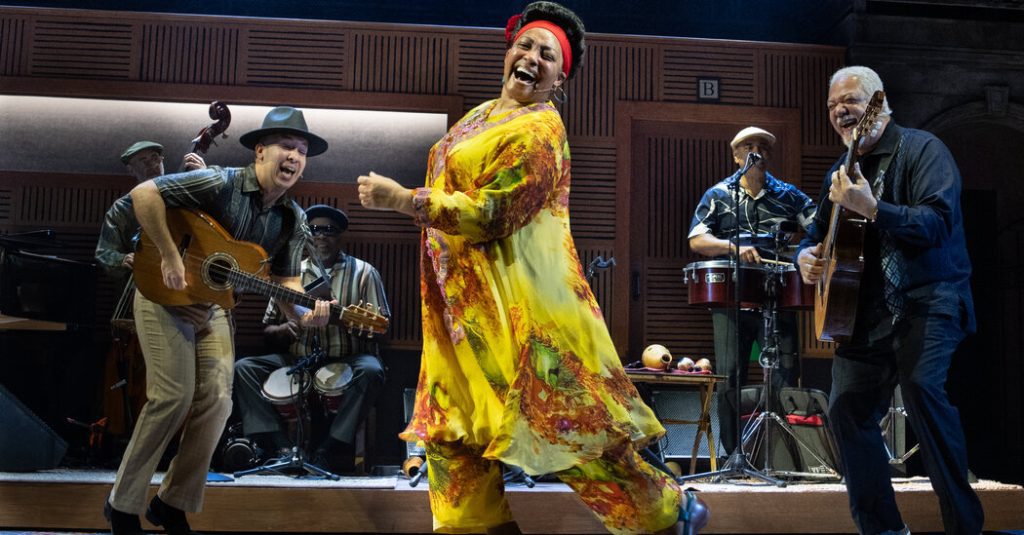Opening Scene and Musical Spirit
The essence of the musical “Buena Vista Social Club” can be felt right from its opening. Just as the audience settles into their seats, a group of musicians begins playing “El Carretero,” while the rest of the cast gathers around to listen. Some lean forward in their chairs, while others rise to dance at the side. The music takes center stage, immediately conveying its power as a shared experience that connects individuals.
Highlighting Music Making
This aspect represents the production’s key success. Although music often plays a vital role in Broadway shows, seldom do they celebrate the thrill of creating music itself.
Showcase of Musical Interconnections
Some productions have effectively explored the process behind music—such as David Adjmi’s play “Stereophonic”, set within recording studios. However, the intricate relationships between musicians, their songs, and society are portrayed particularly vividly and affectionately in “Buena Vista Social Club,” which premiered on Wednesday at the Gerald Schoenfeld Theater. This enhanced version follows its earlier Off-Broadway run at the Atlantic Theater Company, which began in December 2023.
Musical Inspiration and Characters
As suggested by its title, this show directed by Saheem Ali draws inspiration from the acclaimed 1997 album “Buena Vista Social Club,” featuring renowned figures from Havana performing cherished songs from the Cuban repertoire. Many of these songs, among others, populate the musical, along with characters based on real musicians and singers. Notably, the book by Marco Ramirez refers to characters by their first names, emphasizing that this work is more about evocative storytelling than a strict biographical account.
Historical Context and Character Development
The narrative shifts between 1956, during the tense lead-up to the fall of the Batista regime, and 1996, when Juan de Marcos (Justin Cunningham) recruits a band for the veteran singers. The musical explores de Marcos’s efforts to gather these artists without mentioning key figures like producer Nick Gold and guitarist Ry Cooder, focusing instead on his critical role.
Exploration of Relationships
During the show, de Marcos brings in vocalist Compay (Julio Monge), who helps coax Omara (Natalie Venetia Belcon) out of retirement. Their past meetings are revealed through flashbacks, showcasing the lasting effects on Omara’s life. In 1956, a young Omara (the charismatic Isa Antonetti) performs lively tunes such as “El Cumbanchero,” appealing to the Tropicana club’s upscale patrons, while younger Compay (Da’Von T. Moody) introduces her to the Buena Vista Social Club, which attracts a different crowd and offers a contrasting musical experience.
Musical and Thematic Elements
The show effectively employs its vibrant songs and dynamic movement, particularly in the club scenes where dance is essential. Choreographers Patricia Delgado and Justin Peck take advantage of the larger Broadway space. Meanwhile, the book’s scenes set in 1996 buzz with energy, boosted by the camaraderie among the cast, especially Belcon, who plays an older version of Omara. The focus of the show highlights the respect owed to Cuban musicians as equals to their European counterparts, further solidified by a powerful performance in the finale at Carnegie Hall.



